2007.9.16
Updated 2019.6.14
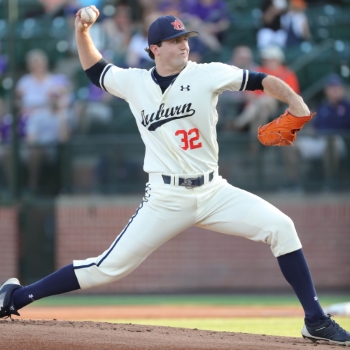 Get
your elbow up. That's a very common piece of advice for
pitchers and throwers. But it's problematic because it can
put a pitcher — or a thrower — in a position called
HyperAbduction and can lead to the muscles of the shoulder becoming
compressed against eech other or the bones of the shoulder. That
then can lead to impingement injuries and, in the
worst case, Thoracic Outlet Syndrome. Get
your elbow up. That's a very common piece of advice for
pitchers and throwers. But it's problematic because it can
put a pitcher — or a thrower — in a position called
HyperAbduction and can lead to the muscles of the shoulder becoming
compressed against eech other or the bones of the shoulder. That
then can lead to impingement injuries and, in the
worst case, Thoracic Outlet Syndrome.
Which seems to be what just happened to Casey Mize.
Completely predictably.
HyperAbduction in Pitchers & Throwers
This piece has a lengthy history.
I first put it together in 2007 thinking that HyperAbduction
— a pitching arm side elbow at or above the level of the
shoulders at foot plant — was a primary problem; that it could
cause problems on its own. I then realized that, in the pitchers
who did break down as expected, their problems were more likely
due to an Inverted W or Inverted V causing a
Timing problem.
So I put this piece on the back burner.
However, I continue to see pitchers with VERY high back
elbows, and I know high pitching arm side elbows at foot
plant are still widely advocated and taught, and that tells
me that Hyperabduction is indeed a primary problem.
I revisted the topic of Hyperabduction in 2016 due to two
incidents. The first was the news that Bronson Arroyo had an
80% tear in his labrum. The second was my correct prediction
that Matt Harvey was dealing with Thoracic Outlet Syndrome
due to his high pitching arm side elbow delivery.
In sum, while Hyperabduction MAY be a primary problem —
via impingement — it most likely is at least a secondary
problem by forcing the pitching arm to take a longer path to
get to the Pitching Power Position, increasing the
likelihood the pitcher will develop a
Timing problem.
Get the Back Elbow Up?
Some people believe it
is critical that pitchers get their Pitching Arm Side (aka
PAS) elbow up ABOVE the level of their shoulders
at the high-cocked position because they believe that this
will help to raise the
pitcher's arm slot. I believe that doing this, which
I call Hyperabduction,
leads to problems with the rotator cuff and/or the Labrum.
What's more, because a pitcher's arm
slot is a function of their shoulder tilt and not the height
of their PAS elbow at the high-cocked position, following
this advice with do absolutely nothing to alter a pitcher's
arm slot.
I believe that, after they break their hands, pitchers
should always keep their PAS elbows BELOW the
level of their shoulders, as Greg
Maddux is doing in the photos below.
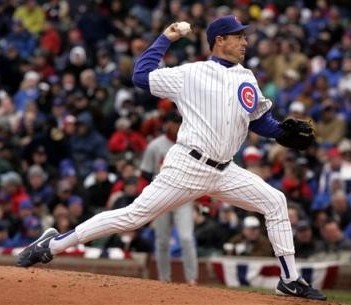
Greg Maddux
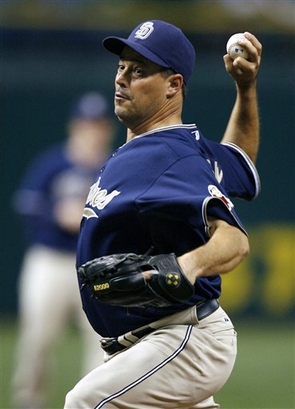
Greg Maddux
If they want to raise
their arm slot, then they should focus on tilting their
shoulders at the release point as Jeff Suppan is doing in the photo below.
Notice how his PAS elbow is just below the level of his
shoulders (the white line).
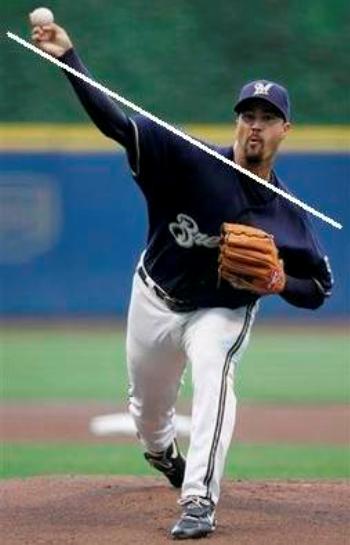
Jeff Suppan
I believe it does a pitcher no good, and may do a great deal
of harm, to try to get their PAS elbow up as their PAS upper arm
passes through the high cocked position.
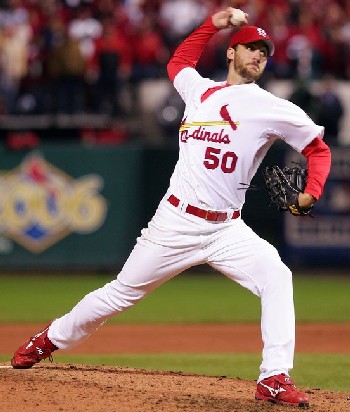
Adam Wainwright
Bronson Arroyo
If you look at these frames from a high-speed clip of
Bronson Arroyo, you can see two things of concern.

Bronson Arroyo - Frame 1
First, notice how Bronson Arroyo breaks his hands
with his fingers on top of the ball.
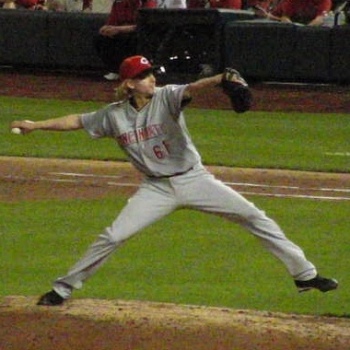
Bronson Arroyo - Frame 2
He then holds that fingers on top of the ball
position through his arm swing.

Bronson Arroyo - Frame 3
As a result, as he goes into Foot Plant, Bronson
Arroyo is pointing the ball at second base and in a
position of
Premature Pronation, which I believe created the
need for his Tommy John surgery.
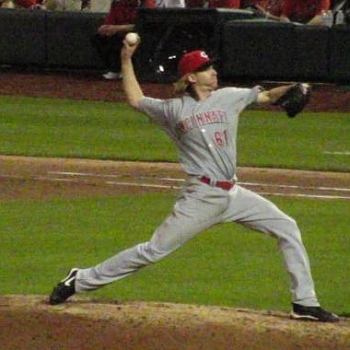
Bronson Arroyo - Frame 4
What's worse, at Foot Plant Bronson Arroyo's PAS elbow is
well above the level of his shoulders. As is explained below, it
is theorized that this can cause labrum problems.
Other Examples
Below are pictures of
pitchers who Hyperabduct their PAS upper arms and who
I believe either are due for — or in the case of Freddy Garcia,
Mark Prior, and Billy Wagner are already
experiencing — shoulder problems as a result.

Freddy Garcia
I used to be a big fan of Freddy
Garcia. I still like how early he gets his PAS arm up into the
high cocked position. However, his recent shoulder problems have
led me to re-examine his mechanics and what I have come to notice
is how high his PAS elbow gets. I believe that this could be
related to Freddy Garcia's recent shoulder problems.
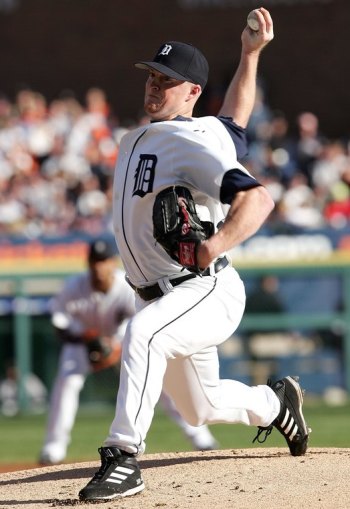
Jeremy Bonderman

Mark Prior
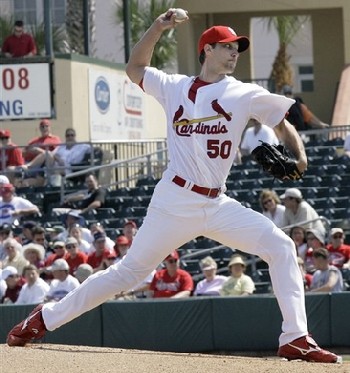
Adam Wainwright
Professional Acceptance
My belief that Hyperabduction, and the
Inverted W,
are bad has seen some acceptance by the professional
medical community. For example, here is an e-mail I received
in April of 2007...
Chris I am an orthopedic surgeon,
and would like to offer you a theory on why the inverted W
is bad for the long-term health of the shoulder.
In the position of hyperabduction, elevation and
extension of the distal humerus above the shoulder (inverted W)
the inferior glenohumeral ligament is placed on stretch.
The humeral head must lever against it to advance the arm forward.
This ligament is the primary anterior stabilizer of the
glenohumeral joint with the arm elevated
(i.e. pitching). In other words, this position places this ligament
under tension, then it is levered against in order to throw.
This eventually will either loosen the shoulder, or tear the
anterior labrum. It should be recognized this ligament is
under stress during the "normal" delivery. If you traumatically
dislocate your shoulder, this ligament is a key part of the
pathology.
Shoulder instability in turn leads to impingement,
and other problems. Conversely, when the elbow is below the
shoulder, this ligament would not be as stressed.
Also, the specific use and timing of the
muscles about the shoulder is critical. They have done muscle
activity studies during throwing, and there are distinct
differences between amateurs and professionals. There is
also evidence for muscle use differences in the healthy shoulders,
and the ones that aren't.
I'm not sure he's exactly right about why this is bad, but what he says is
interesting enough to make me think I'm on to something.
|